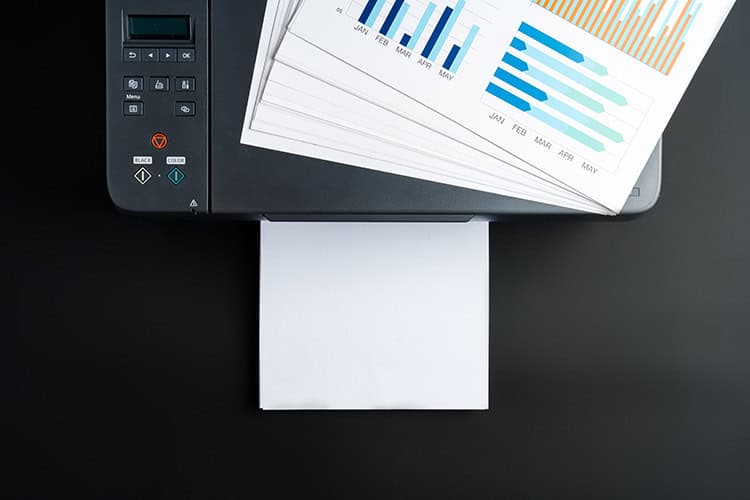-
Your Guide to Understanding The Difference Between Traditional Procurement Methods and Modern Procurement Automation
What’s the difference between traditional procurement systems and modern procurement automation?
If you’re not sure, then you probably also don’t know why switching from a manual to an automated purchasing system can benefit your company. Automating procurement—particularly with a cloud-based program like NextProcess’s purchase order system—simplifies the entire procurement process while also making it more centralized and efficient. It also saves your company money and provides increased visibility into the procurement process.

How Traditional Procurement Works
In a traditional procurement department, the workflow relies on employees completing manual tasks. Much of the process is digital, with purchase orders created on computers, but it still relies on people making the purchase orders using spreadsheets or word processing programs. Often, those purchase orders are printed before being signed and approved. Then, you fax them to suppliers or scan the file back into a computer before submitting it digitally. It’s a lot of work and a lot of paper.
In a traditional procurement system, it’s difficult to keep all spend under the procurement department’s management. Enforcing purchasing agreements, tracking down maverick purchases, and making sure there aren’t duplicate purchase requests all have to be done manually. It’s the same for matching purchase orders to goods received documents and invoices—employees have to do it all manually.
Limitations of Manual Procurement
While a manual process can work, especially for smaller companies, it has several drawbacks. The most obvious is that it’s time-consuming. Employees have to generate purchase orders, get approvals and signatures, submit orders, file records, and do everything else involved with procurement manually. It doesn’t leave much time for tasks like analyzing procurement data, negotiating purchasing agreements, and other strategic tasks that support a company’s high-level goals.
Another big drawback is the risk of human error. Any time people are manually generating forms and entering data there’s a risk that they’ll get something wrong. It’s just a fact of life. Even the most meticulous person messes something up occasionally. Discrepancies in files, duplicate or missing orders, and costly time spent trying to locate and correct errors can all crop up in manual procurement departments.
In addition, manual procurement departments tend to lack visibility. It’s not easy to quickly see the current state of procurement or how it’s impacting cash flow. The lack of visibility also means there’s a higher risk of fraud going undetected in manual departments. It’s challenging to cross-check everything when records are on paper or stored in a digital format that’s difficult to search.

How Automation Is Different
Automation software takes over most of the routine manual labor associated with procurement, streamlining the entire process. It doesn’t replace human employees—it just makes their jobs much easier. For example, rather than manually creating purchase orders, employees simply place an order through the software and it automatically generates a purchase order.
With process automation software, the procurement team sets things up in advance to make purchasing easier for employees while at the same time keeping company spend under procurement’s management. The procurement team selects preferred suppliers and approved items, then includes them in punch-out catalogs and item catalogs within the software. An employee shopping within this type of system gets a streamlined ordering experience and can only order pre-approved items.
Automation software also speeds up processing, reduces errors, and increases visibility. You can set up the software to auto-approve certain types of purchases and route others for manual approval. Automated data entry, invoice matching, and other data management features reduce errors. Automation software also improves visibility because it’s so much easier to access procurement records when all the data is digitized and stored within the same system.
Types of Procurement Automation
There are a few different types of business process automation software. In-house or on-premises software is something you purchase once and install on your company’s computers. Typically, this will include a limited number of software licenses, so you can’t install it on everyone’s computers without paying for extra licenses. Your IT department oversees installing this type of software and keeping it updated.
An easier option is to go with cloud-based Software-as-a-Service (SaaS). With this type of automation solution, the software supplier hosts the software on their own servers and your company accesses the software through the internet. It works the same way as Google’s G-Suite or Microsoft Office 365. Implementing this type of software in your company is relatively easy, and the software supplier takes care of all software updates. If you go with a company like NextProcess, there aren’t even any user license fees. You can give as many employees as you want access to the procurement system.
On-premises software gives your company more direct control over data and security. That doesn’t necessarily mean it’s more secure, but it can be if your company invests in maintaining up-to-date cybersecurity. However, this option is more difficult to update and scale as your company’s needs change. Cloud-based software is more flexible, accessible, and scalable. It’s also a secure option as long as you partner with a reputable software supplier.
NextProcess for Procurement
So how do you decide on the best automation software for your company? There are a ton of options to choose from, but you can narrow your options down by knowing what features to look for. You’ll want a user-friendly interface, features that meet your needs, and the option to customize the software to fit your company. You should also look for a company with responsive customer service and a good track record of successful software implementation. Finally, make sure the software integrates with your existing ERP system (such as SAP, Oracle, or NetSuite).
Here at NextProcess, we offer software modules for all your financial processing needs. We have one of the highest successful implementation rates in the industry and we can integrate our software with every major ERP. Our software is also easy to customize to fit your company’s exact needs. User-friendly features make it simple for employees to use the software. You’ll start seeing a return on investment almost immediately after implementation as the software speeds up processing, cuts costs, and enhances productivity. Contact us today to learn more or set up a free demo.